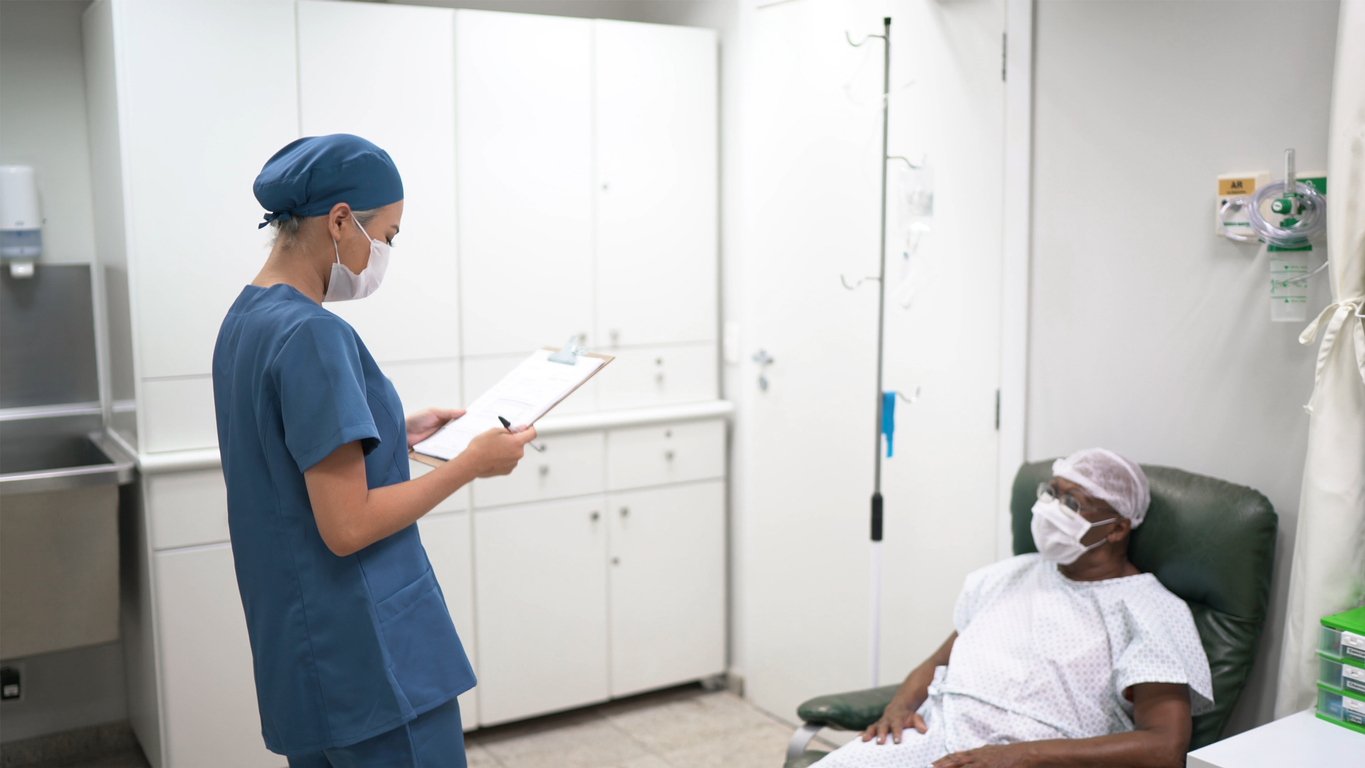While multiple myeloma remains an incurable cancer people with the disease are living longer than ever before, with survival rates tripling and quality of life significantly improving in the last 15 years.
That was one of the key messages imparted at the 2018 Multiple Myeloma Ireland Patient and Family Awareness Day, held in Co Sligo on 9 November.
Ms Mary Kelly, Multiple Myeloma Ireland Chair and Advanced Nurse Practitioner in Haematology, opened the meeting and highlighted the work of the association in supporting research trying to find a cure for myeloma as well as providing practical support to patients and their families. She thanked the sizeable audience for travelling from all over the country to attend the day, “which serves as reminder of the importance of the event”.
As a result of successful fundraising, the organisation is in a position to offer two research grants, worth €10,000 each, to two healthcare professionals/scientists working in the field of myeloma research.
The day’s presentations began from the patient perspective, with an inspiring talk from Sligo woman Veronica Cawley, who shared her story of being diagnosed with multiple myeloma in 2016 and her treatment journey, which included an autologous stem cell transplant.
Expressing her gratitude to her medical team, Ms Cawley said she felt lucky to be diagnosed with myeloma at a time when there were good treatment options and she could come through the other side. That said, she described myeloma as a “mystery” and, given its likeliness to recur at some stage, as something that continues to hang over her life: “Despite all the research it is a hard thing to kill, it wants to survive; it is determined to live.”
Treatment
The first medical speaker of the day was Dr Ruth Morrell, Consultant Haematologist, Letterkenny University Hospital, Donegal, who discussed disease characteristics and current treatment strategies which have improved survival rates for myeloma patients. She explained that while multiple myeloma is only the 14th most common type of cancer, it is the second most common blood cancer seen by haematologists. As survival rates continue to improve, these patients remain on maintenance therapy for longer periods so they are among the most regularly seen by the specialty.
However, awareness of the disease remains low in Ireland, so that needs to be improved, she stated.
Dr Morrell said that one of the interesting features of myeloma is that it is a disease that affects adults. “The average age of patients when diagnosed is in their 60s. Children don’t get it generally – there is a case report of a 14-year-old and an 18-year-old in the literature, but in general less than 1 per cent are aged under 35 years. And we don’t know why this is.”
The incidence of multiple myeloma is increasing and seems to be more complex than simply due to the ageing of the population, she explained.
The reasons for developing myeloma are not known at this time. “But the triggers that cause the plasma cells to develop into cancerous cells are probably different in different people and in particular the genetic abnormalities that we can now test for show that there are different genetic abnormalities in different patients.”
Looking at the diagnosis of the disease, symptoms can be vague (tiredness and pain) initially. “Many people have low blood counts when they initially come and see us, and that’s common for blood cancers,” Dr Morrell added.
However, myeloma is a “peculiar” disease and causes a lot of other symptoms. So by growing in the bone marrow, it can weaken the bones and cause lytic bone lesions, leading to severe pain and high calcium levels. As it weakens the immune system, patients often present with signs of infection, ie, chest infections, she told the meeting.
The key principles of therapy in multiple myeloma are to stop the production of abnormal plasma cells, strengthen the bone and prevent fractures, treat anaemia and reduce fatigue, as well as promotion of wellbeing and quality-of-life.
Not everyone who has myeloma in their bone marrow needs treatment, Dr Morrell explained — patients with smouldering myeloma may not develop symptoms for many, many years, if at all, so not everyone is treated.
The patients that are treated are those who develop or have at least one of the CRAB criteria: C – high calcium in blood, R – renal/kidney dysfunction, A – anaemia, and B – bone disease.
In addition, there is the SLiM biomarkers of malignancy criteria: ≥Sixty-per cent clonal BM plasma cells; Li=serum free light chain ratio involved:uninvolved ≥100; M=>one focal lesion (≥5mm each) detected by MRI studies.
She highlighted that survival rates and quality-of-life for myeloma patients have dramatically improved in the last 15 years – in 2008 about 50 per cent of myeloma patients were alive at five years, while currently the five-year survival rate is about 75-80 per cent: “So we are getting better and better and we now have ways to individualise that and help us find out who are the patients who might respond better and who are those a little more at risk of relapsing early.”
Current treatment for multiple myeloma typically includes three-to-six cycles of chemotherapy (melphalan and cyclophosphamide).
Discussing the use of autologous stem cell transplants, Dr Morrell noted that when this treatment was first developed the age limit was generally up to the age of 60 or maybe 65 years; “but nowadays we know that it is not really the age that matters but how well a patient is otherwise – you can have a very fit 73-year-old who could be considered first for transplant, and a much younger unfit patient who would not do well and some patients do not want to do a transplant as we have many other good treatment options now”.
So three-to-six cycles of chemotherapy, followed by transplant, along with treatment consolidation of typically two more chemotherapy cycles, and then long-term low-dose maintenance treatment, can afford a prolonged remission up to 10-15-20 years and some of these patients may even be considered cured, she commented. “The jury is still out on how long maintenance therapy should continue for, some use a year, two years, indefinitely and there are trials ongoing to try to determine the optimum treatment duration. This is very different to even just five years ago when we didn’t really use maintenance therapy.”
For patients who can’t or don’t wish to undergo a transplant, “we tend to prolong this initial phase of treatment for six-to-12 months and then move back down into a maintenance phase and this can keep people in remission for a long time.”
The introduction of immunomodulatory drugs (thalidomide, lenalidomide and more recently pomalidomide) and proteasome inhibitors (bortezomib, carfilzomib and ixazomib) and their combined usage with steroids have also made a significant positive difference for myeloma patients in the last two decades, Dr Morrell said, particularly in the relapse setting.
“The three drug combination is better than two in many patients – a big trial published only about two years ago really showed improved survival and improved time to next treatment. So this should really be considered in everyone except the most frail of patients who have no medical issues prohibiting use of either drug.”
She also mentioned the emergence of the anti-CD38 monoclonal antibody daratumumab, which has shown very promising results both alone and in combination. In Ireland there remains difficulties getting it in combination, Dr Morrell said, and it can only be used in the relapsed setting on its own. “We anticipate that it will be moved up to frontline as more evidence for its use upfront accumulates – it looks very promising.” However, the increased costs with the newer therapies is also an issue, she acknowledged.
Infection and frailty is a key risk with myeloma patients, as is shingles, so supportive medications are important and include bisphosphonates, intravenous immunoglobulin, flu vaccine and medicines to counteract side effects – DVT prevention and antivirals, especially with bortezomib.
There are now over 20 approved treatment regimens for multiple myeloma with many more in the pipeline so the future is bright for these patients, Dr Morrell concluded.
Supportive care
Ms Miriam Flatley, Senior Oncology Physiotherapist, Galway University Hospitals, gave a presentation on the benefits of exercise for myeloma patients.
Ms Flatley emphasised that exercise is safe before, during and after cancer treatment and is very beneficial for patients.
She quoted research showing the benefits of exercise in reducing cancer-related fatigue and said patients should be referred to a physiotherapist for advice.
Ms Flatley advised that 150 minutes of aerobic exercise and two-to-three sessions of strength training weekly is needed for maximum benefit.
Ms Geraldine Walpole, Advanced Nurse Practitioner in Haematology, Sligo University Hospital, gave a presentation on managing the side effects of treatment and complications of multiple myeloma.
Her tips included staying well, taking infection control measures, eating healthily, staying hydrated and taking pain medications as directed. Ms Walpole noted that peripheral neuropathy is a risk when taking thalidomide and other immunomodulatory drugs.
She stressed that patients should consult with their medical team before taking any supplements and advised against taking large doses of vitamin C, immune supplements such as Echinacea and green tea if on bortezomib. Patients should also seek out social and psychological supports, like patient support groups, during this difficult time, Ms Walpole said.
Transplant
Ms Liz Higgins, Autologous Transplant Co-Ordinator, St James’s Hospital, Dublin, gave a practical presentation on how autologous stem cell transplants work for multiple myeloma and what to expect. She explained that primarily the stem cells are harvested from the patient’s own blood through the arm veins and otherwise through the neck, then stored while the patient receives treatment, such as high-dose chemotherapy, sometimes with radiation. Following this treatment, the stored stem cells are infused back into the patient’s blood. The treatment involves inpatient admission for a number of weeks in a special isolated unit to protect against infection risk.
Dental care for myeloma patients
Dr Andrew Bolas, Principal Dental Surgeon, Sligo/Leitrim, who has developed a special expertise in treating myeloma patients, spoke about osteonecrosis of the jaw – risk factors, prevention and treatment strategies.
Dr Bolus explained that key risk factors for this complication include intravenous bisphosphonates (1 per cent risk versus 0.1 per cent with oral bisphosphonates), the long half-life of certain drugs, dental extractions, trauma from dentures, dental infection, poor oral hygiene, smoking and other chemotherapy drugs.
Warning signs to be aware of include exposed bone, non-healing ulcers or sores, teeth becoming loose, discharge from the gums, numbness or tingling of the lips or gums, and a ‘heavy or dead’ sensation on one side of the jaw, he said.
If osteonecrosis does develop, the main treatment options include antibiotics, antiseptic mouthwashes, conservative or radical debridement, or a ‘watch and wait’ approach: Sometimes the exposed bone can break off and the gum line heals itself.
The main ways to reduce the risks are for patients to practice good oral hygiene, and have a dental check up and get any problems addressed before starting treatment, as well as regular check ups during treatment, keeping their dentist informed of what medications they are taking so any necessary dental work can be carefully amended to address the relevant risk factors.
Future strategies for myeloma
The final presentation of the day was given by Dr Andrew Hodgson, Consultant Haematologist, Sligo University Hospital, who spoke about the changing treatment landscape for multiple myeloma and future therapies. He noted that current survival rates are a dramatic improvement on 50 years ago, and multiple myeloma patients are increasingly living longer and better than ever before.
Dr Hodgson explained that following some significant advances in the last 15 years, currently, the continuing progress in treating myeloma is incremental, “we are inching towards a cure”.
The latest advance for Irish patients has been the HSE National Cancer Control Programme’s recent approval of carfilzomib, a new intravenous protease inhibitor for people with relapsed or refractory multiple myeloma after at least one previous therapy.
Other promising developments in the pipeline include better immunotherapies and potential cancer vaccine therapies. These potential immunotherapies include a stem cell memory chimeric antigen receptor (CAR) T-cell product, which is designed to enhance a patient’s own T-cells to safely and effectively eliminate tumour cells carrying B-cell maturation antigen, which is found on essentially all multiple myeloma tumour cells. Though Dr Hodgson cautioned that this treatment, if proven to be successful through more trials, will require a lot of technology and new structures and will be very expensive.
“The key messages are we are still very much choosing therapy based on the patient, their suitability to whether they can have a [stem cell] transplant, which is still regarded as the best treatment, following chemotherapy, and then probably maintenance. In the less fit, older age group combination chemotherapy [is the main therapy]. Whereas you can debate which therapy is best at what time, the therapies we have now by and large are very effective for the majority of people. So we don’t necessarily have to tear our hair out too much worrying- if one treatment doesn’t work, you can move to the next. The likelihood is that in the lifetime of a myeloma patient, who doesn’t have any other significant co-morbidities, they may well be exposed to all of the treatments at different stages.”
For more information see www.multiplemyelomaireland.org.
Differentiating amyloidosis from multiple myeloma
Dr John Quinn, consultant haematologist at Beaumont Hospital, Dublin, answered some frequently asked questions about amyloidosis for Multiple Myeloma Ireland, why it can be confused with multiple myeloma, and how it may affect some people with multiple myeloma.
What is amyloidosis?
Amyloidosis is the name given to a group of diseases, the most common of which is light chain amyloidosis. This is the most frequently diagnosed type, also known as AL amyloidosis. That accounts for about 60 per cent of diagnosed amyloidosis cases. The other 40 per cent is made up of a mixture of different types of amyloidosis; for example there are rare hereditary forms, a type that complicates chronic infections, and there is a type that we encounter in older people called transthyretin amyloidosis (TTR).
How is amyloidosis linked to multiple myeloma?
The type that overlaps with multiple myeloma is light chain amyloidosis. The reason these conditions are often grouped together and seen as related is because light chain amyloidosis, like myeloma, is also a plasma cell disorder, with the plasma cell at the heart of the problem. The plasma cell makes an abnormal protein, which becomes ‘misfolded’ and eventually forms amyloid. Amyloid is an abnormal protein complex that then gets deposited in organs and can cause problems. The other link with myeloma, is, because it is a plasma cell disease, we use very similar medications to treat both conditions. They are separate diseases, however, a small minority of myeloma patients can develop amyloidosis as a complication of myeloma during the course of their illness. If it does occur in the setting of multiple myeloma, it does present treatment challenges.
What are the symptoms of amyloidosis?
The main organs affected in light chain amyloidosis are the heart, kidneys, liver, and nervous system. The symptoms that people develop tend to reflect the organs involved. The most common symptoms we would see would be shortness of breath and fatigue, particularly if the heart is involved and lower limb swelling if the kidneys and/or heart are involved. Numbness and tingling in the peripheries [arms and legs] can also happen if there is nervous system involvement. Gut upset and diarrhoea can also occur. Patients can also get tongue enlargement and occasionally can experience easy bruising. These are the most common symptoms we tend to see.
How difficult is it to diagnose?
It is a rare illness – we probably see one light chain amyloidosis case for every 10-15 multiple myeloma cases. It can be a difficult diagnosis to make and because the symptoms are non-specific, a patient can see a number of doctors before a diagnosis is made. This means the disease can be at an advanced stage and if the heart is involved, then it becomes more difficult to manage and has a poorer outlook.
When would you suspect amyloidosis in a multiple myeloma patient?
If a patient develops symptoms that are out of line with what we would expect then we would work to rule out amyloidosis. If I see a multiple myeloma patient who heretofore has been pretty stable and all of a sudden is complaining of severe fatigue out of proportion to where you’d expect to be, or if the patient has developed heart disease or kidney disease. Or when we know the myeloma doesn’t seem to be active, we know something new has developed. It can be subtle, and difficult to detect, even for experienced doctors. We take it on a case by case basis. And if a patient suspects something has changed with their symptoms, they should discuss this with their doctor.












Leave a Reply
You must be logged in to post a comment.